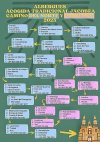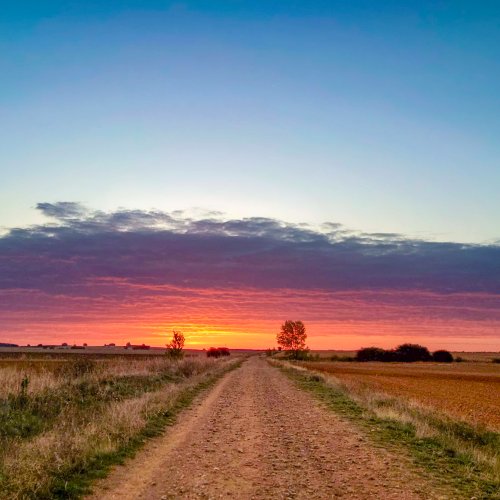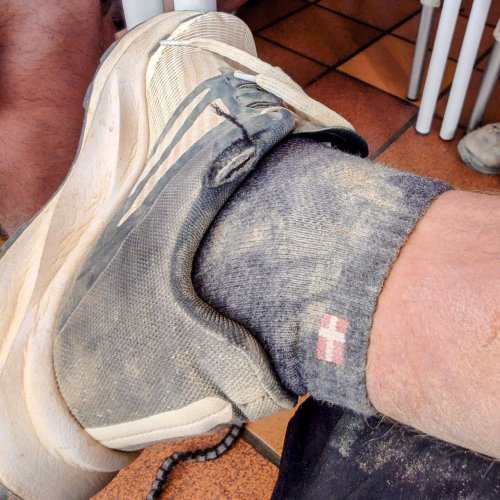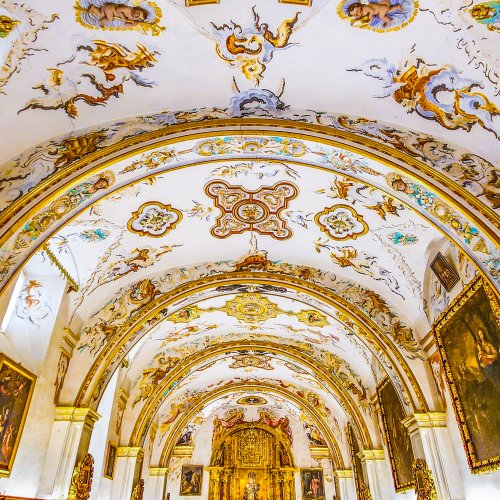- Time of past OR future Camino
- First: Camino Francés 2002; most recent: Norte/Primitivo 2019
This is my first time back on the first half of the Norte since COVID. It's good to be back! The walk remains as stunning as ever. Some assorted observations on developments, changes, and other stuff on the stages I've walked thus far (Irún-Güemes).
I'm impressed by the work that has been done with the municipal albergues in Irún and Deba. Cramped as Deba's space is, they make it work. But where are the other municipals? And is there any support for private albergues that want to focus on pilgrims, not tourists and surfers? More options need to be made available to pilgrims, especially in the summer.
Anyway, time to get back outside--it's a beautiful afternoon in Güemes.
- It sure looks like they've re-routed the "official" route in Stage 1 through Leko, instead of staying at the high level until the final descent to Pasaia. I don't get it. They've also wiped out the old yellow arrows, at least near the turn-off. My recommendation is to ignore the yellow arrows calling for that detour through Lekos. If you can handle an extra kilometer and a bit more up-and-down, stay with the GR into Pasaia. If you can't, follow the old Camino by following the GR until it forks left uphill soon after the Leko split. Instead, follow the trail into the trees. Eventually, it'll dump you out on a paved road. Turn left onto that road and stick with it for a bit. When it makes a hairpin turn to the left, go straight onto a minor paved road. You'll be seeing old yellow arrows at this point
- There are two new pilgrim rest areas en route to Orio. The first comes just as the pavement (finally) ends after Barrio Igeldo--it's a small, wooden kiosk on the edge of the woods with coffee and tea. The other comes after the pavement resumes, just after you've crested a small hill--it's a personal home on the right, with lots of comfortable seating. Really nice spot
- If you follow the GR into Deba--and you should!--it has kind of an annoying ending, doubling back inland after the Ermita de Santa Catalina and rejoining the Camino for the final descent. Well, it wasn't always that way--some erosion concerns forced the closure of a more direct approach. I was walking this on a Saturday, and I saw tons of locals coming up that route, so I checked it out--looks like it's totally viable once again! To do this, pause as you approach the Ermita de Santa Catalina. Before you step across the fence posts into the shrine's grounds, turn around, and look for the footpath descending to your left. That's the way. It will drop you right by the beach in Deba and save some distance in the process
- It's a common complaint (or sad observation, maybe) that bars often open later on the Norte than the CF. Well, there's a bar in Deba directly across from the albergue that opens at 06:00 every day, even Sunday!
- I'll need to calculate this out when I get home and have access to a proper computer and all of my notes, but it sure felt like a *lot* more of the walk through the woods to Markina has been paved. (Also, I'll once again plug the old approach into Markina. When you arrive at a gravel road atop the hills overlooking Markina, and the waymark calls for a sharp right turn, note that there's another trail splitting off to the left at that point. It's steep in places, for sure, so maybe not best for those with balky knees, but it trims off a kilometer.)
- Due to albergue closures in Gernika and Eskerika, the albergue in Olabe has become a pinch point. Totally caught me by surprise. From Markina, people are looking at 18km to Olabe or 30ish km to Pozueta/Gerekiz, so they're leaning heavily towards the former. A lot of people were turned away because all of the beds were already reserved
- One of the new things I was most excited to try this time was the coastal approach from Gernika to Portugalete. This follows the GR123 and it's well waymarked most of the time with the red/white blazes. There's a surf hostel in Bakio, 25km from Gernika, that is definitely much pricier than a pilgrim albergue, but still cheaper than a hotel--and the attached restaurant is buzzing with activity. The major highlight of this variant is getting to see Gaztelugatxeko (note that a reservation is required to access the church!). The train from Bilbao connects with Plentzia, further on this walk, so you could potentially stay in Bakio, then stay in Bilbao for one or two nights while commuting by train. On the whole, I was glad to do it. The walking was lovely--harder surfaces at the beginning and ending, but tons of fantastic coastal scenery in between. After so many tourist-focused towns early on the Norte in the Basque Country, it was kind of nice to see some quieter Basque beach towns
- I had also mapped out plans to follow the GR from the Portugalete side of the Puente Colgante to Playa de la Arena. Alas, I just didn't have the juice to walk those this time--they go atop those two big hills and I think the views would be awesome. But it was cloudy, and I was tired. I followed the bike track and wished as always for something more exciting
- A detour is currently in effect between Pobeña and Covarón. That bummed me out--hope it's fixed up soon. (Judging by the fence "blocking" the official route, I don't think many locals are following the rules.)
- They've done a better job of waymarking the route split in Ontón. Much appreciated
- On the flip side, they've now changed the waymarks so that you're steered back inland from the beach in Mioño, instead of following the wonderful coastal walk. This is ridiculous. I think it's intended to drive more traffic past the newer albergue in Santullan, and I appreciate that, but covering up the old waymarks to steer everyone that way? That's annoying. Follow the coast if you don't want to stay in Santullan--stay on the road as it winds around the water, then fork left uphill on the road past the restaurant. Some waymarks survive after that and it's otherwise intuitive
- I finally had the chance to walk around the Santoña peninsula! It adds around 8km to the walk. A lot of this walk is in thick tree cover, so there are fewer views than I expected, but when things opened up it was great. The route drops you in just above the Playa de Berria, slipping in between the prison and the cemetery, cheerily enough
- The inland variant to Isla is now waymarked from Noja. I prefer the coastal approach, of course. Still, I hope Isla is getting enough traffic to keep that albergue alive
- Some current prices: 1.10 for Pasaia ferry, 0.50 for Puente Colgante, 2.50 for Laredo ferry
I'm impressed by the work that has been done with the municipal albergues in Irún and Deba. Cramped as Deba's space is, they make it work. But where are the other municipals? And is there any support for private albergues that want to focus on pilgrims, not tourists and surfers? More options need to be made available to pilgrims, especially in the summer.
Anyway, time to get back outside--it's a beautiful afternoon in Güemes.


















